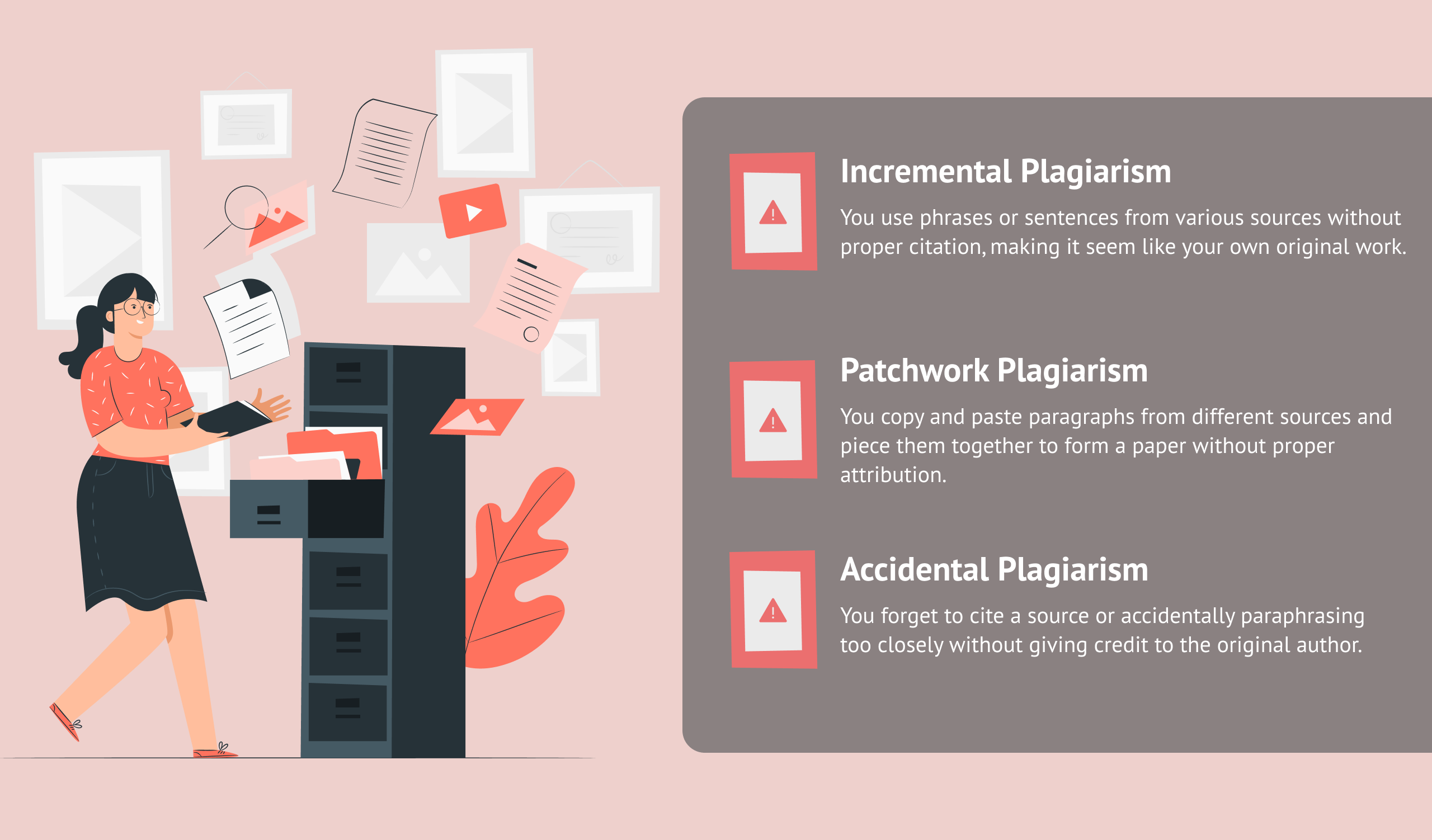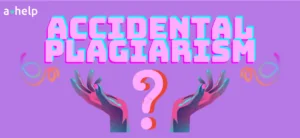We’re all familiar with the concept of plagiarism, aren’t we? It’s like that unspoken rule in the academic world: don’t copy someone else’s work and pass it off as your own. Simple? Well, not exactly. See, there’s this sneaky little cousin of plagiarism called incremental plagiarism that tends to fly under the radar. So, what exactly is incremental plagiarism? It happens when you borrow bits and pieces of someone else’s work without giving them proper credit.

✅ AI Essay Writer ✅ AI Detector ✅ Plagchecker ✅ Paraphraser
✅ Summarizer ✅ Citation Generator
Incremental Plagiarism: Features and Common Cases
Now, you might be scratching your head, wondering what on earth incremental plagiarism is and how to distinguish it from other types. You’re not alone. Incremental plagiarism is like the ninja of the plagiarism world—it’s stealthy, it’s subtle, and it can catch you off guard without you even realizing it. It’s not as obvious as straight-up copying and pasting whole paragraphs, but it’s still a big no-no in education and writing.
| Incremental plagiarism, also known as small or snippets of plagiarism, occurs when someone takes bits and pieces of another person’s work and uses them in their own work without proper acknowledgment or citation. |
So, why does incremental plagiarism happen? You’re knee-deep in research for your latest paper, scrolling through article after article, trying to piece together your argument and make it look professional and credible. In the midst of all this information overload, it’s easy to accidentally lift a sentence here or a phrase there without even realizing it. After all, when you’re fully engaged in academic vocabulary and terminology, it’s easy for ideas to start blending together. You can even simply forget what passage you took from which source!
Anyway, ignorance of the law is not an excuse, and regardless of your intentions, it’s still plagiarism. You shouldn’t expect that just because incremental plagiarism is like a chameleon and blends in seamlessly with the rest of your work, your professor won’t catch it. Even though this type of plagiarism involves small chunks of text rather than entire passages, your teacher may find these pieces sound or feel slightly different from the rest of the work, and it’s already a warning signal for your assessor. Let’s also not forget about professional plagiarism-detecting tools that are widely used by colleges. Turnitin, for example, equally well flags entire paragraphs copied and pasted from Wikipedia and tiny fragments borrowed from somewhere. Therefore it’s recommended to check your papers for plagiarism before submitting them. Tools like plagchecker from AcademicHelp will help your paper avoid failing because of incremental, global, patchwork, or any other sort of plagiarism.
Try our Free Plagchecker
Incremental Plagiarism VS Similar Types
Now, let’s talk about how incremental plagiarism stacks up against its siblings in the plagiarism family tree. The incremental kind isn’t the only kid on the block—it’s got some close relatives, namely patchwork and accidental plagiarism. These three amigos might seem similar at first glance, but each one has its own unique characteristics.
Imagine you’re in a music store (if you still remember those) browsing through the CDs. Incremental plagiarism is like taking a riff from one song, a chorus from another, and blending them together to create something new. Patchwork plagiarism, on the other hand, is more like stitching together different patches of fabric to make a quilt—it’s a bit more deliberate than incremental plagiarism but still involves borrowing from multiple sources. And then there’s accidental plagiarism, which is like accidentally wearing the same outfit as someone else to a party—you didn’t mean to do it, but it happened anyway.
To help you wrap your head around the differences between these three types of plagiarism, let’s break it down into short and simple examples:

How To Avoid Incremental Plagiarism
Avoiding incremental plagiarism isn’t rocket science. Actually, if you’re serious about your work avoiding plagiarising sources may even be easy if you develop a habit of checking your paper chapter by chapter. Yet it does require a bit of mindfulness and attention to detail. Here are some tips to help you stay on the straight and narrow:
📚 Cite Your Sources: This one’s a no-brainer. Whenever you borrow ideas or language from another source, make sure to give credit where credit is due. Whether it’s a direct quote or a paraphrase, always cite your sources properly using the appropriate citation style.
🗒️ Take Detailed Notes: When you’re researching for your paper, make sure to keep detailed notes of where you found each piece of information. This way, you’ll have a clear record of which ideas belong to which sources, making it easier to avoid accidentally plagiarizing.
🗨️ Use Quotation Marks: If you’re directly quoting someone else’s words, always use quotation marks to indicate that it’s not your original language. This helps to distinguish between your own ideas and those of others.
🔄 Paraphrase Carefully: When paraphrasing someone else’s ideas, make sure to put it in your own words and provide proper citations. Avoid simply swapping out a few words here and there—it’s still considered plagiarism if you’re not giving credit to the original source.
🧐 Check Your Work: Before submitting your paper, take the time to double-check your sources and citations. Make sure everything is properly attributed and that you haven’t inadvertently borrowed too heavily from someone else’s work.
⚒️ Use Professional Tools: Using professional tools helps a lot in your writing process. Plagiarism-checking tools, like the solution from AcademicHelp, can be invaluable in making your work original and free from plagiarism. It scans your document and compares it against a database of sources, flagging any instances of potential plagiarism so you can address them before submitting your work.
FAQ
Follow us on Reddit for more insights and updates.





Comments (0)
Welcome to A*Help comments!
We’re all about debate and discussion at A*Help.
We value the diverse opinions of users, so you may find points of view that you don’t agree with. And that’s cool. However, there are certain things we’re not OK with: attempts to manipulate our data in any way, for example, or the posting of discriminative, offensive, hateful, or disparaging material.